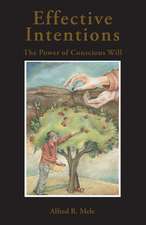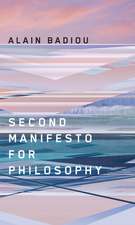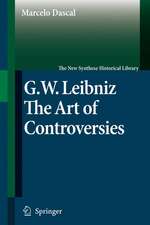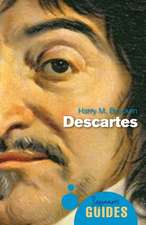Science in the Age of Baroque: International Archives of the History of Ideas Archives internationales d'histoire des idées, cartea 208
Editat de Ofer Gal, Raz Chen-Morrisen Limba Engleză Hardback – 21 noi 2012
| Toate formatele și edițiile | Preț | Express |
|---|---|---|
| Paperback (1) | 891.17 lei 43-57 zile | |
| SPRINGER NETHERLANDS – 14 dec 2014 | 891.17 lei 43-57 zile | |
| Hardback (1) | 896.84 lei 43-57 zile | |
| SPRINGER NETHERLANDS – 21 noi 2012 | 896.84 lei 43-57 zile |
Din seria International Archives of the History of Ideas Archives internationales d'histoire des idées
- 24%
 Preț: 679.97 lei
Preț: 679.97 lei - 18%
 Preț: 728.43 lei
Preț: 728.43 lei -
 Preț: 380.25 lei
Preț: 380.25 lei -
 Preț: 382.18 lei
Preț: 382.18 lei -
 Preț: 382.36 lei
Preț: 382.36 lei -
 Preț: 385.84 lei
Preț: 385.84 lei -
 Preț: 381.43 lei
Preț: 381.43 lei -
 Preț: 380.45 lei
Preț: 380.45 lei - 18%
 Preț: 1218.35 lei
Preț: 1218.35 lei -
 Preț: 379.68 lei
Preț: 379.68 lei -
 Preț: 399.29 lei
Preț: 399.29 lei - 18%
 Preț: 950.03 lei
Preț: 950.03 lei -
 Preț: 385.08 lei
Preț: 385.08 lei - 18%
 Preț: 953.20 lei
Preț: 953.20 lei - 15%
 Preț: 648.24 lei
Preț: 648.24 lei - 15%
 Preț: 641.03 lei
Preț: 641.03 lei - 18%
 Preț: 954.93 lei
Preț: 954.93 lei - 18%
 Preț: 944.19 lei
Preț: 944.19 lei - 15%
 Preț: 643.00 lei
Preț: 643.00 lei - 18%
 Preț: 1825.40 lei
Preț: 1825.40 lei - 18%
 Preț: 1224.54 lei
Preț: 1224.54 lei - 15%
 Preț: 644.63 lei
Preț: 644.63 lei - 15%
 Preț: 633.53 lei
Preț: 633.53 lei - 15%
 Preț: 647.08 lei
Preț: 647.08 lei - 18%
 Preț: 1233.06 lei
Preț: 1233.06 lei -
 Preț: 390.25 lei
Preț: 390.25 lei - 18%
 Preț: 945.92 lei
Preț: 945.92 lei - 18%
 Preț: 951.91 lei
Preț: 951.91 lei - 18%
 Preț: 1219.63 lei
Preț: 1219.63 lei - 15%
 Preț: 638.24 lei
Preț: 638.24 lei - 18%
 Preț: 1223.43 lei
Preț: 1223.43 lei
Preț: 896.84 lei
Preț vechi: 1093.70 lei
-18% Nou
Puncte Express: 1345
Preț estimativ în valută:
171.66€ • 186.53$ • 144.29£
171.66€ • 186.53$ • 144.29£
Carte tipărită la comandă
Livrare economică 21 aprilie-05 mai
Preluare comenzi: 021 569.72.76
Specificații
ISBN-13: 9789400748064
ISBN-10: 940074806X
Pagini: 320
Ilustrații: VI, 314 p.
Dimensiuni: 155 x 235 x 23 mm
Greutate: 0.61 kg
Ediția:2013
Editura: SPRINGER NETHERLANDS
Colecția Springer
Seria International Archives of the History of Ideas Archives internationales d'histoire des idées
Locul publicării:Dordrecht, Netherlands
ISBN-10: 940074806X
Pagini: 320
Ilustrații: VI, 314 p.
Dimensiuni: 155 x 235 x 23 mm
Greutate: 0.61 kg
Ediția:2013
Editura: SPRINGER NETHERLANDS
Colecția Springer
Seria International Archives of the History of Ideas Archives internationales d'histoire des idées
Locul publicării:Dordrecht, Netherlands
Public țintă
ResearchCuprins
1. Ofer Gal and Raz Chen Morris: Baroque Modes and the Production of Knowledge.- A. Order.- 2. John Schuster: What Was the Relation of Baroque Culture to the Trajectory of Early Modern Natural Philosophy?.- 3. Koen Vermeir: “Bent And Directed Towards Him:” A Baroque Perspective on Kircher’s Sunflower Clock.- 4. Ofer Gal: From Divine Order to Human Approximation: Mathematics in Baroque Science.- B. Vision.- 5. Raz Chen-Morris: “The Quality of Nothing,” Or Kepler's Visual Economy of Science.- 6. Paula Findlen: Agostino Scilla: A Baroque Painter in Pursuit of Science.- 7. J.B. Shank: What Exactly Was “Torricelli’s Barometer?”.- 8. Alan Salter: William Harvey and the Way of the Artisan.- C. Excess.- 9. John Gascoigne: Crossing the Pillars of Hercules: Francis Bacon, the Scientific Revolution and the New World.- 10. Nicholas Dew: The Hive and the Pendulum: Universal Metrology and Baroque Science.-11. Victor Boantza: Chymical Philosophy and Boyle’s Incongruous Philosophical Chymistry.-12 Rivka Feldhay: The Simulation of Nature and the Dissimulation of the Law on a Baroque Stage: Galileo and the Church Revisited.
Textul de pe ultima copertă
This volume examines the New Science of the 17th century in the context of Baroque culture, analysing its emergence as an integral part of the high culture of the period. The collected essays explore themes common to the new practices of knowledge production and the rapidly changing culture surrounding them, as well as the obsessions, anxieties and aspirations they share, such as the foundations of order, the power and peril of mediation and the conflation of the natural and the artificial. The essays also take on the historiographical issues involved: the characterization of culture in general and culture of knowledge in particular; the use of generalizations like ‘Baroque’ and the status of such categories; and the role of these in untangling the historical complexities of the tumultuous 17th century. The canonical protagonists of the ‘Scientific Revolution’ are considered, and so are some obscure and suppressed figures: Galileo side by side with Scheiner;Torricelli together with Kircher; Newton as well as Scilla.
The coupling of Baroque and Science defies both the still-triumphalist historiographies of the Scientific Revolution and the slight embarrassment that the Baroque represents for most cultural-national histories of Western Europe. It signals a methodological interest in tensions and dilemmas rather than self-affirming narratives of success and failure, and provides an opportunity for reflective critique of our historical categories which is valuable in its own right.
The coupling of Baroque and Science defies both the still-triumphalist historiographies of the Scientific Revolution and the slight embarrassment that the Baroque represents for most cultural-national histories of Western Europe. It signals a methodological interest in tensions and dilemmas rather than self-affirming narratives of success and failure, and provides an opportunity for reflective critique of our historical categories which is valuable in its own right.
Caracteristici
New interpretations of major themes in 17th century scientific thought Innovative examination of the Baroque qualities of canonical figures of the scientific revolution from Kepler to Newton A new historiographical paradigm for the cultural ambience of the new science ?



















